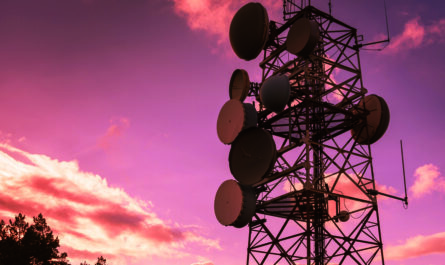Mechanical Ventilators: Lifesavers in the times of medical emergencies
The COVID-19 pandemic has highlighted the importance of Mechanical Ventilators like never before. As the number of critical COVID patients needing respiratory support saw a massive surge globally, it became evident that ventilators are true lifesavers, especially for those suffering from Acute Respiratory Distress Syndrome (ARDS). In this article, we discuss Mechanical Ventilators in detail, their function, types and the role they are playing in saving lives during the current health crisis.
What are Mechanical Ventilators?
Mechanical ventilators, also known as breathing machines, are medical devices that provide respiratory support to patients who cannot breathe adequately on their own or require assistance with breathing. They deliver pressurized air or oxygen enriched gas into the lungs via an endotracheal tube (ET tube) inserted through the mouth or tracheostomy tube inserted through the windpipe. This helps patients exchange gases in the lungs and removes carbon dioxide from the body.
Ventilators take over the work of breathing and oxygenate the blood by inflating and deflating the lungs on a regular rhythm. The volume of airflow, as well as the pressure applied, can be adjusted as per the patient’s condition and lung capacity. Modern ventilators come equipped with various modes and functions to support patients with different health issues affecting respiration.
Types of Mechanical Ventilators
Based on portability and functionality, ventilators are broadly classified into three categories:
Intensive Care Ventilators: Large and stationary ICU ventilators deliver the highest level of respiratory support. They have advanced ventilator modes and functions to treat the most critically ill patients.
Portable Ventilators: Slightly compact than ICU vents, portable ventilators can be wheeled to the patient’s bedside or transport critically ill patients within the hospital.
Homecare Ventilators: Small, lightweight ventilators designed for long-term home use. They have basic functions and modes to assist patients dependent on ventilation at home.
The Modes of Ventilation:
Ventilators use different ventilation modes to suit patient-specific needs. Some common ones are:
– Volume Control (VC): Delivers a set tidal volume with each breath. Most basic mode.
– Pressure Control (PC): Sets an inspiratory pressure level and breath rate. Lung volume delivered may vary.
– Synchronized Intermittent Mandatory Ventilation (SIMV): Combines assisted & controlled breaths. Delivers mandatory volume-controlled breaths with optional patient-triggered breaths.
– Pressure Support Ventilation (PSV): Sets inspiratory pressure levels. Breaths are fully triggered & cycled by the patient. Great for weaning.
– Continuous Positive Airway Pressure (CPAP): Maintains a constant positive pressure in airways throughout breathing cycle. Useful for ARDS.
– Airway Pressure Release Ventilation (APRV): Alternates between two pressure levels – maintains recruitment and prevents overdistention.
The Role of Ventilators in COVID Management
A majority of critical COVID-19 patients experience Acute Respiratory Distress Syndrome (ARDS) which impairs oxygen exchange and requires ventilatory support. The sudden surge globally overwhelmed healthcare systems as ventilator demand far exceeded supply. India witnessed an over tenfold increase in demand as cases piled up rapidly. Countries like the US and Italy reported ventilator shortages as COVID wards filled up.
Multiple innovative solutions emerged to address the scarcity – modifying BiPAP and anesthesia machines, 3D printing vent parts, developing high frequency oscillators as alternatives. States in the US received emergency shipments of machines from federal stockpiles. Manufacturers ramped up production, often round-the-clock. While invasive ventilation remains a mainstay in severe ARDS, alternative strategies like prone positioning, steroid use are showing promise in COVID care alongside ventilation. The pandemic emphasized the importance of strong respiratory care teams, guidelines and long-term ventilator preparedness.
Role of Mechanical Ventilators during natural disasters
Natural disasters often cause mass casualties with high incidences of pulmonary injuries and trauma. Mechanical ventilators become indispensable medical equipment in such times. During the devastating 2015 Nepal earthquake, international teams airlifted dozens of portable ICU ventilators along with other life-saving aids to set up makeshift medical camps in remote affected areas. Typhoons, hurricanes, floods and wildfires too have claimed lives worldwide which could be prevented with timely ventilation support. Investing in emergency stockpiles of portable ventilators, training paramedics in their use and organizing well-coordinated air/ground transport fleets can significantly boost outcomes. Countries should develop robust disaster response plans accounting for respiratory care needs and strategic ventilator deployment at local and national levels.
To summarize, mechanical ventilators are highly advanced critical care instruments which have literally been breathing life into severely ill patients for decades. The ongoing pandemic underscored their importance as well as highlighted global gaps in availability. While developing new technologies, continual staff training and community education on responsible usage are equally important. Nations must incorporate emergency ventilator plans, boost domestic production and support global health initiatives to strengthen respiratory care everywhere. Together we can overcome challenges and utilize the lifesaving potential of these machines to serve humanity better during crises.
Note:
1. Source: Coherent Market Insights, Public sources, Desk research
2. We have leveraged AI tools to mine information and compile it




